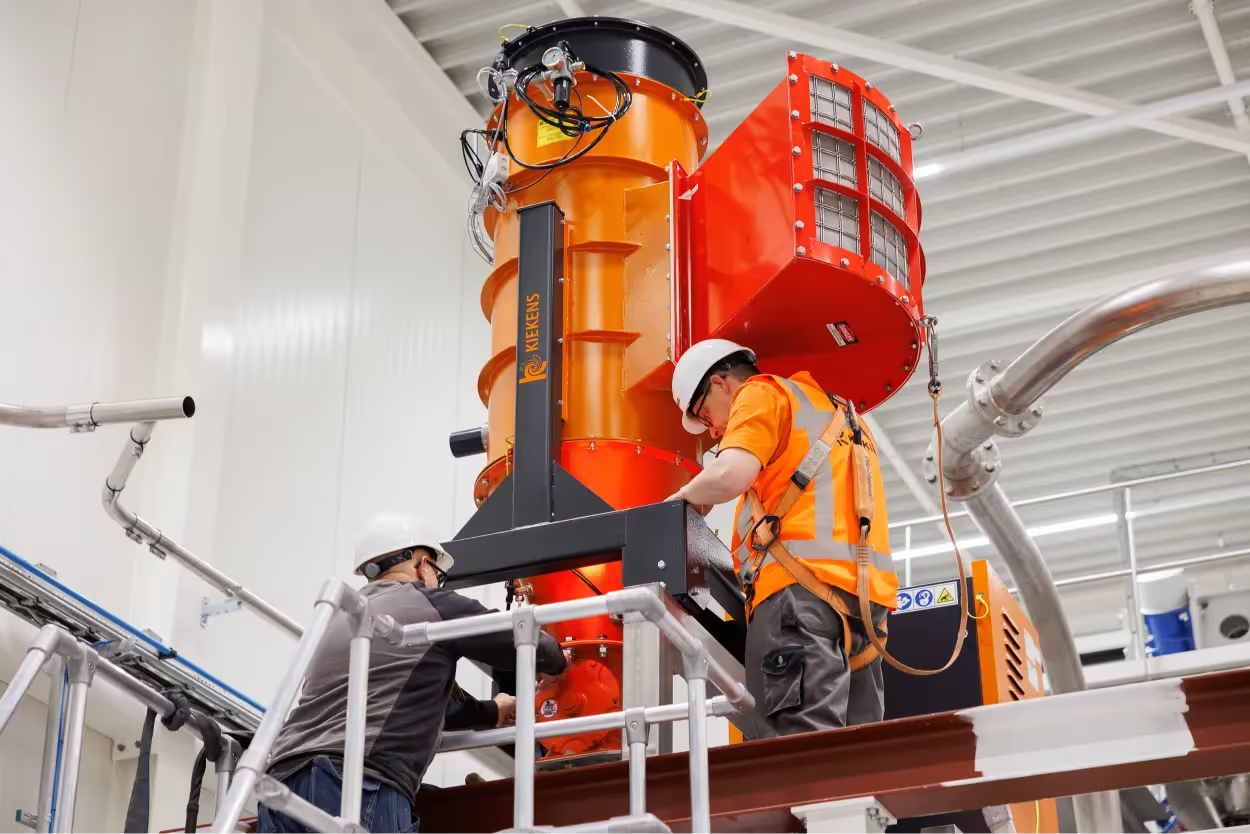ATEX extraction systems

What are ATEX extraction systems?
ATEX installations have been specially developed for areas with a risk of explosion. They extract flammable vapors, gases or dust particles and filter them out of the air. The term “ATEX” comes from the European Directives 2014/34/EU and 1999/92/EC, which define the requirements that equipment must meet in hazardous areas. Thanks to these standards, you can be sure that your installation works safely — and explosion risks are kept to a minimum.
The benefits at a glance:
- Explosion protection
- Maximum safety
- Health protection
- Comply with laws and regulations
- Efficiency and Flexibility
- Sustainable design
- Innovative technology
What are the types of ATEX installations?
Depending on your application, different systems are available:
- Mobile and stationary ATEX extraction systems
Mobile systems are deployed directly at the source. Stationary installations provide constant extraction at fixed locations in your production environment. - ATEX industrial vacuum cleaners
Especially for flammable particulate matter and chips. Suitable for machine extraction or floor cleaning. - ATEX fans
For the safe removal of explosive vapors or gases from risk areas. - Wet washers
Use water as a filter medium - ideal for sparks or metal dust. - Dry dedusters
With HEPA or M filters, for dry particulate matter such as in the wood, cement or food industries. - Gas extractors
Focused on explosive vapors such as glue fumes or plastic emissions — often used in laboratories and chemistry.
How does an ATEX extraction system work?
The installation extracts flammable particles directly at the source. HEPA or M filters remove up to 99.9% of harmful substances. They are then stored in conductive, secure containers. The entire installation was designed without ignition sources: antistatic, grounded and spark-free. Additional protections such as automatic shut-off or spark detection provide extra safety.
What does ATEX compliant mean?
If you work in an ATEX zone, all your equipment must comply with the applicable ATEX guidelines:
- LATEX 114 — for manufacturers (Directive 2014/34/EU)
- LATEX 153 — for users/administrators (Directive 1999/92/EC)
The right one is important zoning of your work area, a good risk analysis and choosing the right protection measures.
Which ATEX zones are there?
For gases and vapours:
- Zone 0: continuous risk of explosion
- Zone 1: occasional hazard during normal use
- Zone 2: rare danger, and then short-term
For dust:
- Zone 20: continuous dust explosion hazard
- Zone 21: occasional hazard during normal use
- Zone 22: rare danger
Explosion protection vs. ATEX
Explosion protection is the total number of measures to prevent explosions. ATEX is the European legislation that makes these measures mandatory. ATEX is therefore part of explosion protection — but a very important one.
In which industries is ATEX extraction crucial?
ATEX extraction systems are indispensable in sectors where flammable or explosive substances are released.
They filter dangerous particles from the air and at the same time reduce the risk of ignition sources.Typical applications can be found in:
- Metalworking: extraction of metallic dust and chips
- Food industry: removal of flour, sugar and grain dust
- Chemical and pharmaceutical industries: extraction of flammable gases and vapours
- Wood processing: dedusting of wood dust
- Cement and building materials industry: fine dust extraction
- Additive manufacturing (3D printing): extraction of powder substances
- Warehouses and laboratories: removal of explosive vapors and gases
ATEX at Kiekens: always a customized solution
When you work with flammable substances, you don't want to run any risks. Kiekens helps you with ATEX-certified solutions that exactly match your application. From advice and design to installation and maintenance. This way, you can work safer, healthier and fully compliant with legislation.
Get advice from our specialists. Together, we will find the solution that best suits your process.
The performance of an extraction system is defined by its air volume flow (m³/h) and negative pressure (Pa). It must be tailored to the type, quantity, and hazard level of the materials being extracted – as well as the specific work area.For example: point extractions typically require 200 to 2,000 m³/h, while extraction walls for adhesive vapours may demand up to 13,800 m³/h.
Mobile systems are highly flexible and can be positioned right at the source of contamination. They respond quickly to changes in the production process or unexpected incidents, and they’re easy to maintain. That makes them ideal for dynamic or temporary work environments.
Yes. Mobile ATEX extraction units offer a safe and flexible solution for targeted removal of hazardous substances – even across changing locations or applications.




